1lumen selects and reviews products personally. We may earn affiliate commissions through our links, which help support our testing.
Dual head LEP flashlight review: 4,000 meters
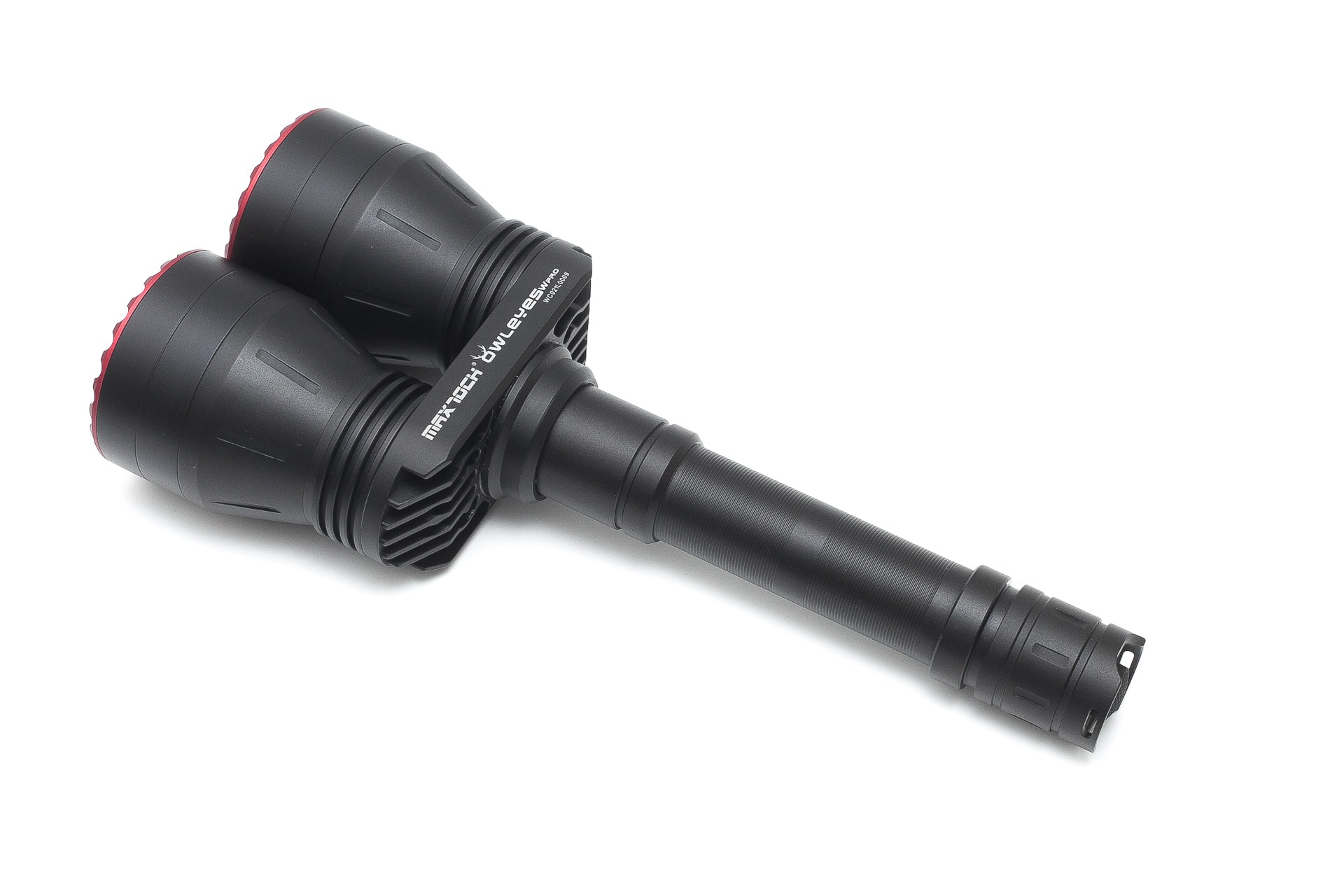
Maxtoch Owleyes W Pro specifications
| Brand/model | Maxtoch Owleyes W Pro |
|---|---|
| LED | Dual LEP |
| Max. Lumens | 1,200 lm |
| Max. Beam intensity / distance | 4,000,000 cd (4km) |
| Battery config. | 2*21700 |
| Onboard charging | None |
| Modes | 3 |
| Blinkies | None |
| Reflector | None |
| Waterproof | IPX8 |
| Review date | March 2022 |
Introduction:
Edit: the Maxtoch Owleyes W Pro has been replaced by the Maxtoch Owleyes W PRO v2. Check out that review as well.
It’s still fairly recent when we reviewed the Maxtoch L2K, which kind of shook the flashlight communities because of its throw capabilities. And we’re glad to introduce you to the newest king of LEPs below $1000.
If you think 3,000 meters (3280 yards or 1.86 miles) of the L2K is extreme, you better pay attention, because this is supposed to throw even much further, at 4,000 meters (4374 yards or 2.48 miles).
The Maxtoch Owleyes W PRO looks a lot like the Owleyes W2 that Dave reviewed a while ago. But the W PRO is using 2 LEPs instead of 2 LEDs. And while the W2 wasn’t a bad performer, the W PRO promises something very unique.
Package quality.
Maxtoch’s packaging of the Owleyes W PRO is fairly simple with a brown carton box. But something that is quite unique, is the bag they include to hold the flashlight. But to my surprise, it didn’t arrive in one of those black bags, but in a generic carry case (just like the W2). I have several of the exact same ones, so I know these are generic. Also worthy to note: I ordered the W PRO without a charger and batteries.
- The flashlight: Maxtoch Owleyes W PRO
- Lanyard
- Manual
- Spare o-rings
- Tactical grip ring
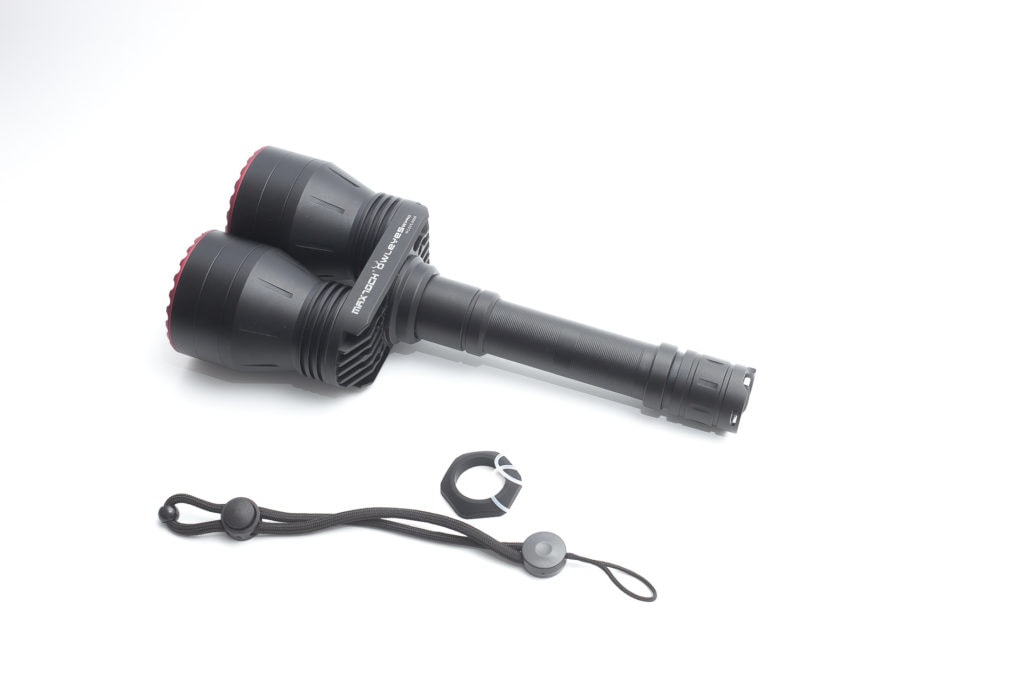
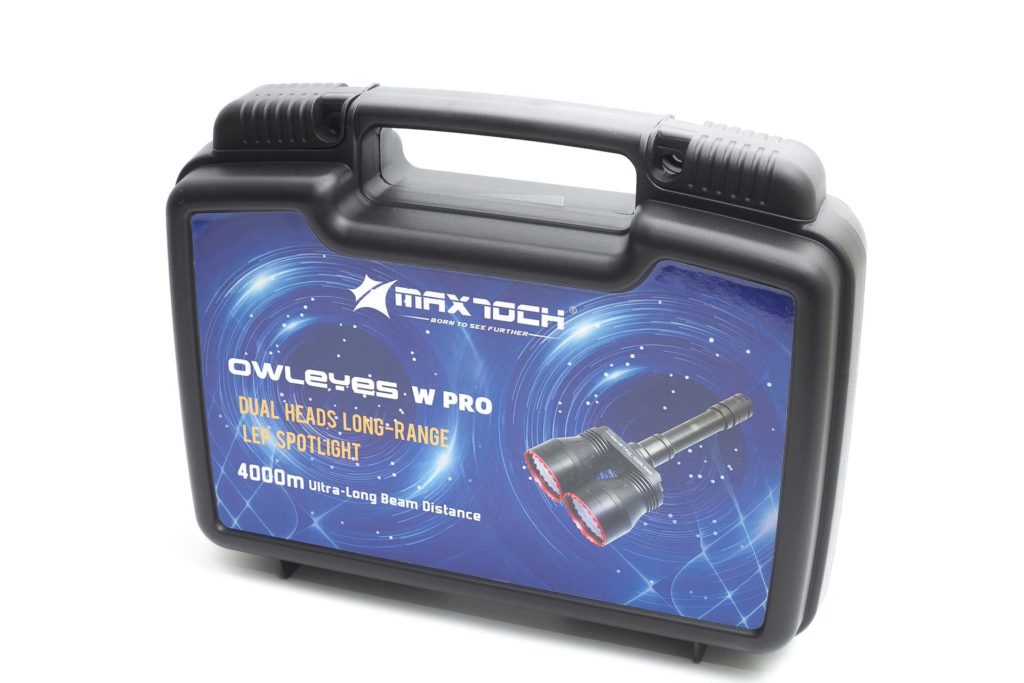
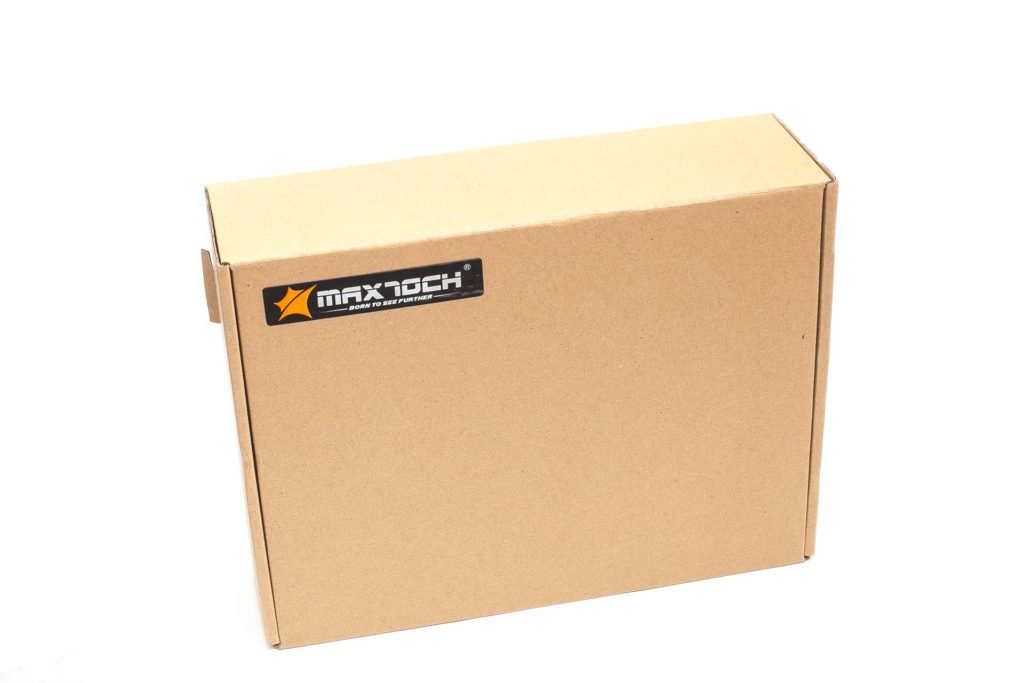
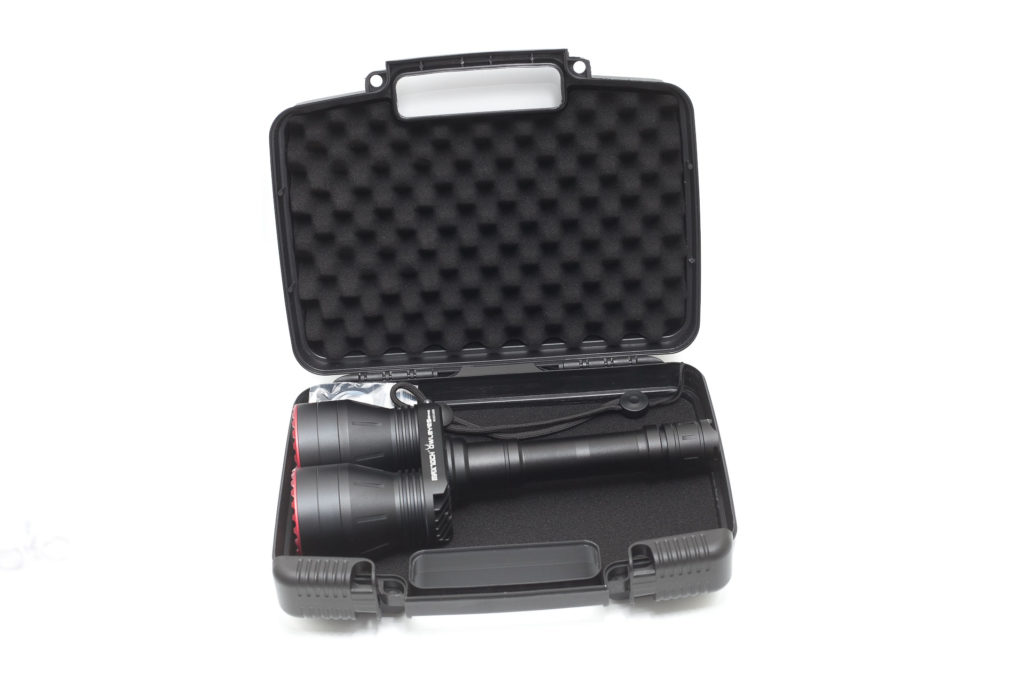
Flashlight in use
In terms of its length, the W PRO is similar to the Maxtoch L2K and L3K, but the dual head configuration makes it a bit front-heavy. It’s not too bad, but you can definitely feel the difference between this and the L2K or L3K. But the good news is that the dual-head design works wonders as an anti-roll feature. Just saying.
If you held the W2 and W PRO next to each other, they would look identical, except for the prints. The heads have the same shape as well as the bodies.
There is only 1 switch, which is located at the rear. This means that you probably need 2 hands to hold and operate it at the same time. You can still hold it in an overhand, tactical position, but it feels a little strange. The switch itself is a forward clicky switch, which means that you have to change modes when the flashlight it turned off. Unlike a reverse clicky switch, which you have to activate first before you can change modes… and changing modes has to be done when the light is on.
The tailcap has 2 cutouts, so if you’re holding it in an overhand position, your thumb could rest on the switch, and operate it without too much trouble. The 2 shrouded parts have a hole to attach a lanyard.
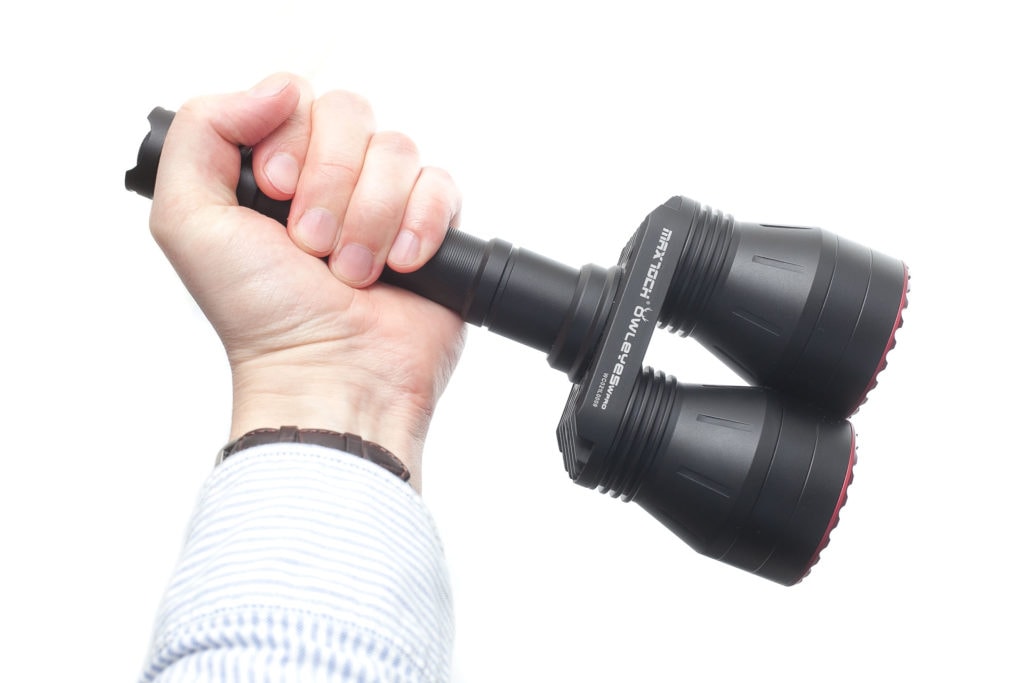
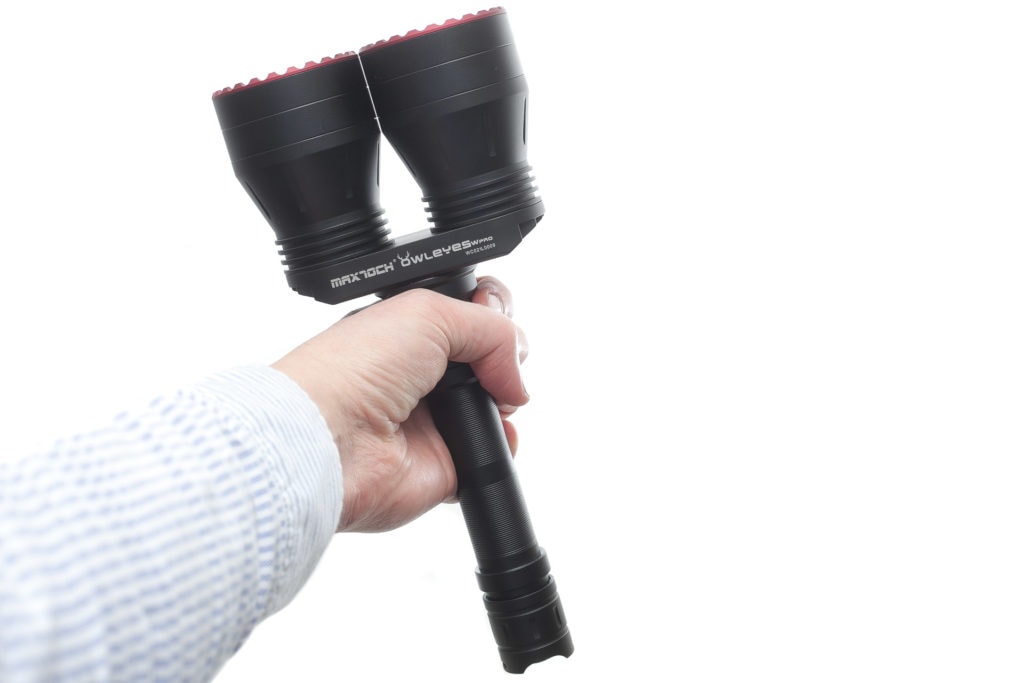
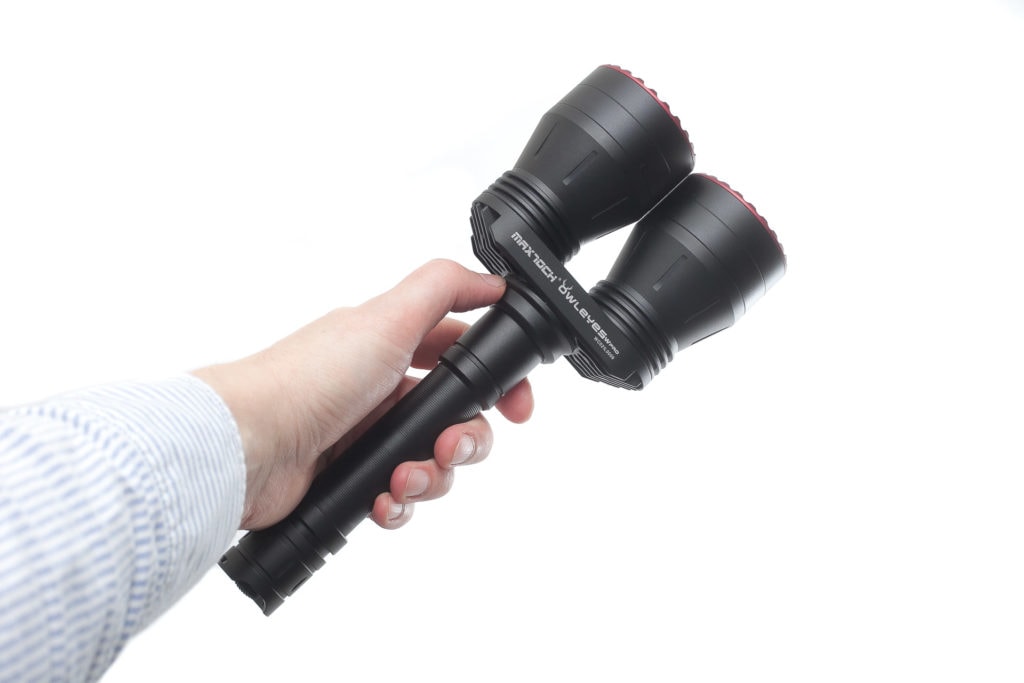
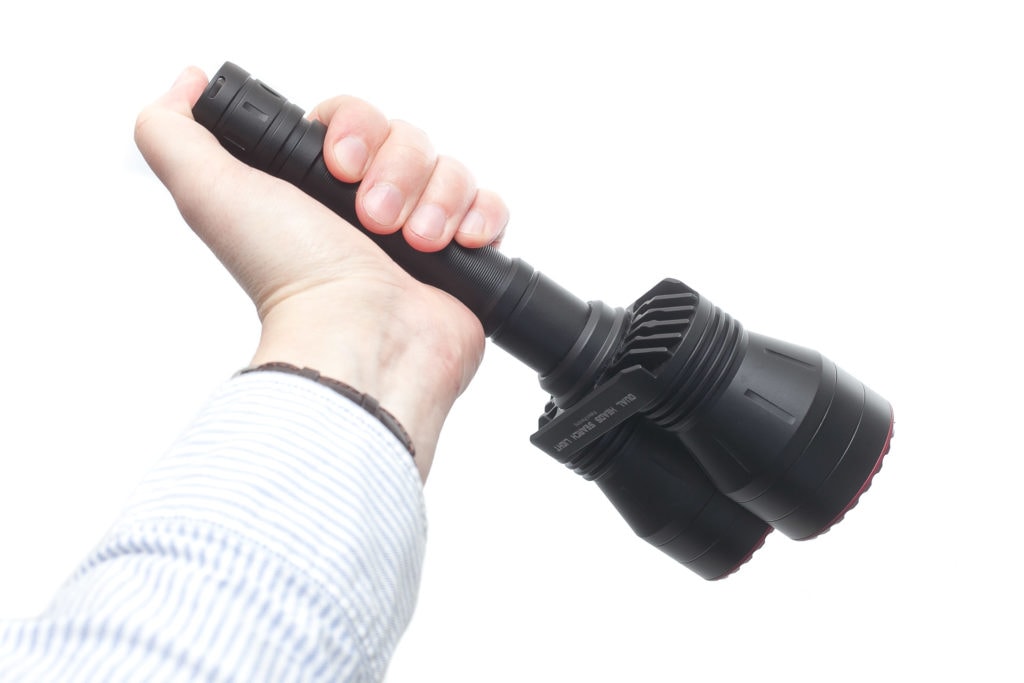
Build Quality, and Warranty
I’ve said it in all of my Maxtoch reviews, these lights are built for a specific situation in mind: hunting. That means that they don’t have the nicest design features, like beautiful knurling and stainless steel bezels. And if you keep that in mind, you hopefully won’t get too disappointed when you receive it. No, it doesn’t have any problems when it comes to the build quality, but don’t expect some high-end EDC design and finish.
Its anodization is matte black all around the light, without any blemishes or chipped spots.
The tailcap is removable, but the battery tube seems to be glued. I didn’t have trouble opening up the heads of the L2K, and L3K either, so you can get to the internals (at least from the front) of most Maxtoch lights.
The body doesn’t have the traditional knurling, but reeding that goes around the body tube. And since the threads between body and head are glued, unscrewing the tailcap never results in accidentally removing the battery tube.
There was plenty of lubrication on the threads and o-ring, to make unscrewing/screwing a pleasant activity :–) lol But the lubrication is very thin, so it will get into the tailcap. For water resistance, they added a single white o-ring near the tailcap. But there is a second slot, to add another o-ring. That should be plenty to keep water out and enough to justify the IPX8 rating.
Maxtoch offers a 1-year warranty if the problem is caused by normal usage. But there is a lifetime warranty for repairs with no labor charges as long as parts are available. You will only be charged for the parts needed to repair the light. Accessories like lanyards, holsters, etc are not covered by this warranty. More info can be found here: https://maxtoch.com/pages/–14
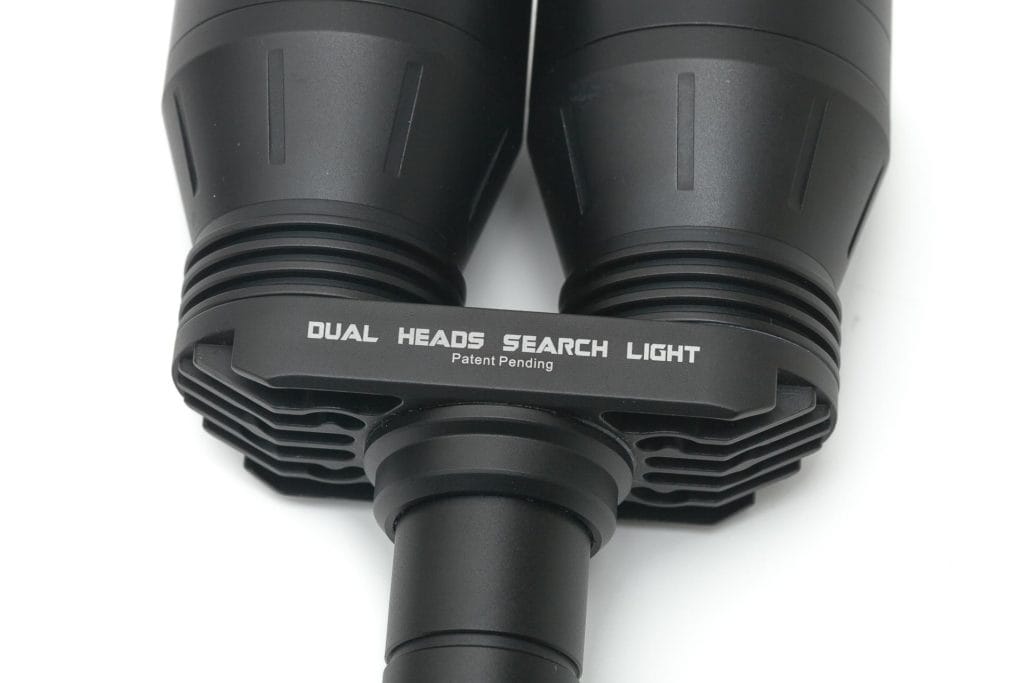
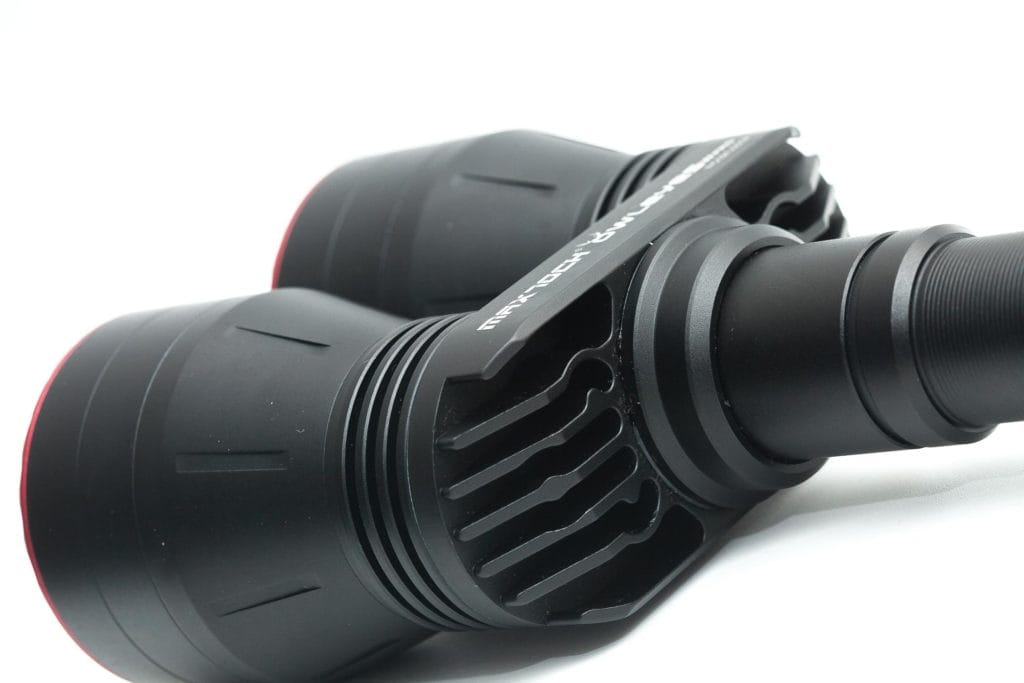
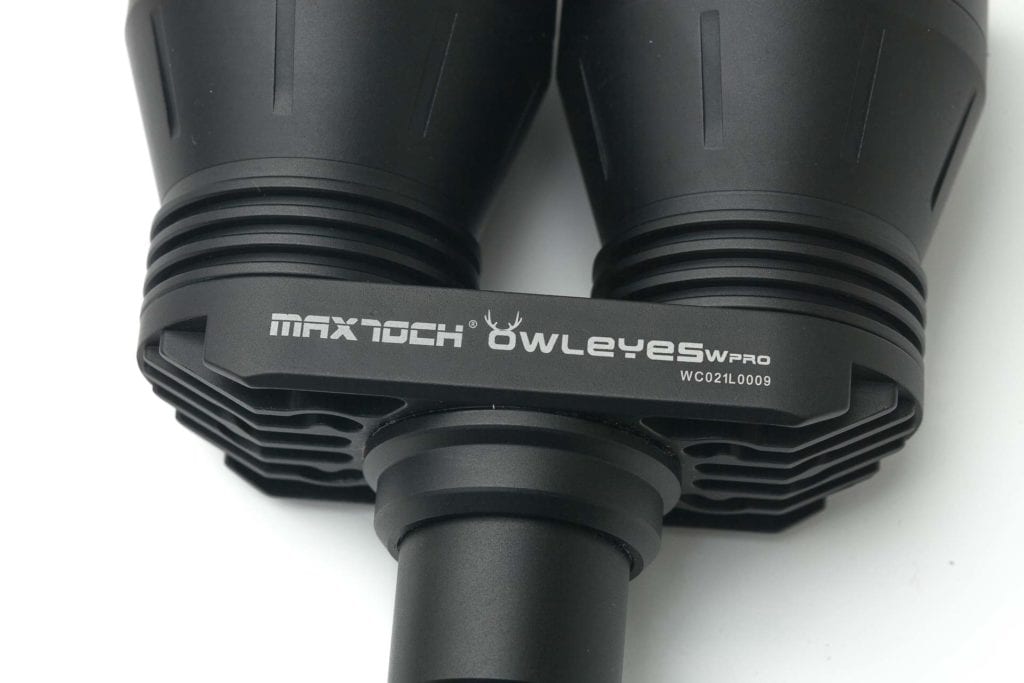
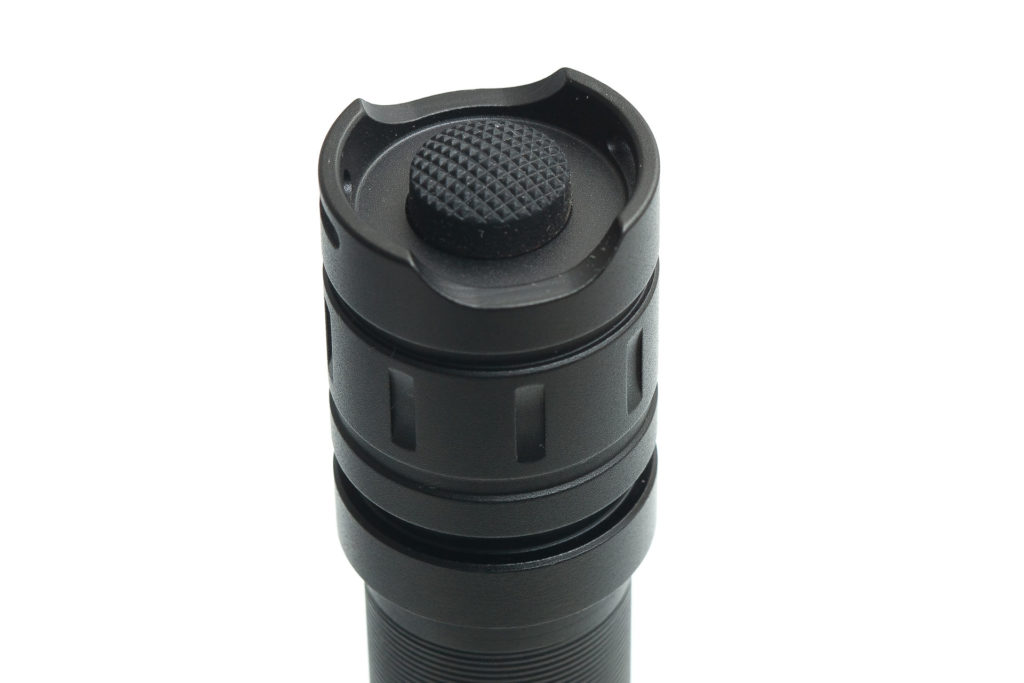
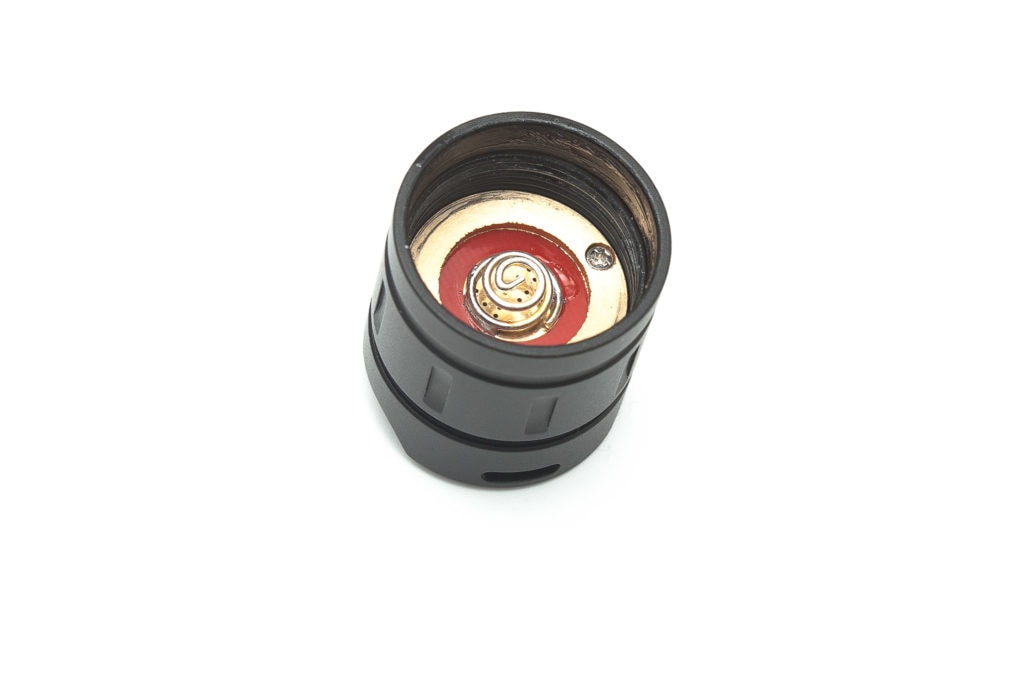
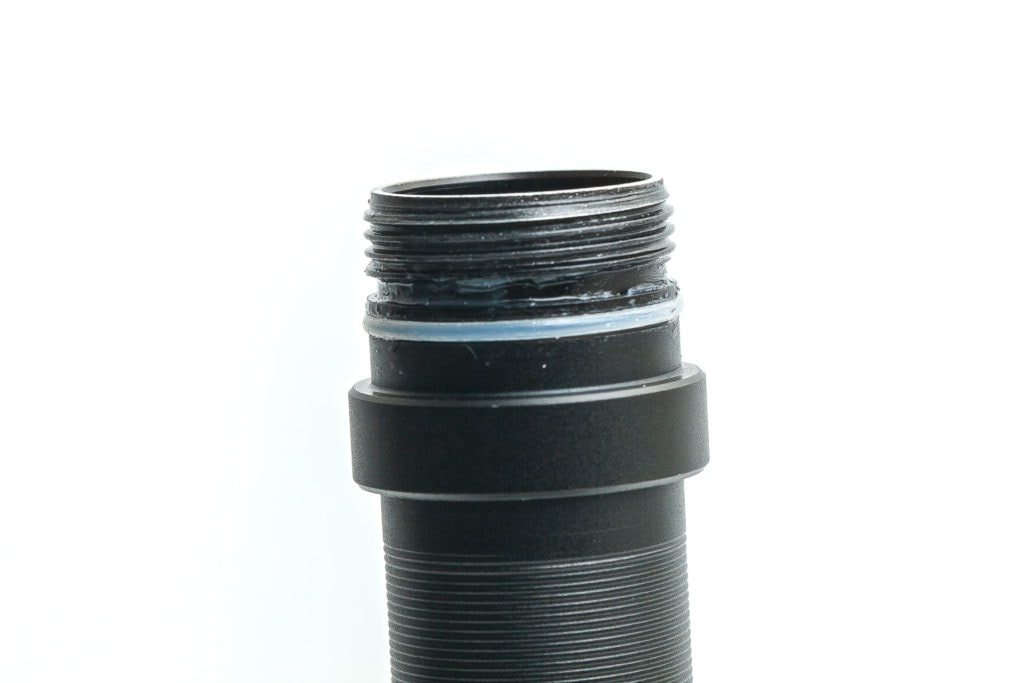
LEP, Lens, Bezel, Beam, and Reflector
If you think that 1 LEP doesn’t reach far enough, what would you do? Would you buy 2 LEP flashlights? Why not build a Dual LEP setup instead? That’s probably what Maxtoch thought when they thought about increasing the beam distance of their LEP flashlights. And I’m happy they did, because, even if it looks a little weird, I can tell you that its performance is staggering.
Ooopsss… I shouldn’t have said that just yet.
Both bezels have the typical red Maxtoch coating, including the crenelation. They can be removed, but the threads are relatively thin.
Fortunately, there is a glass lens in front of the convex lens, to protect it. It’s much cheaper and easier to find a replacement for a standard lens than for the correct convex lens.
Having 2 beams next to each other looks a little strange, especially when pointing to something close by. But after about 5 meters both hotspots turn into 1 wide hotspot, and after 20-30 meters/yards, they become 1 very intense beam. And since this is an LEP thrower, it’s not meant to light up something at a close distance anyway.
The color of the beams are quite neutral, and not too cold. Please have a look at the beamshots towards the end of this review.
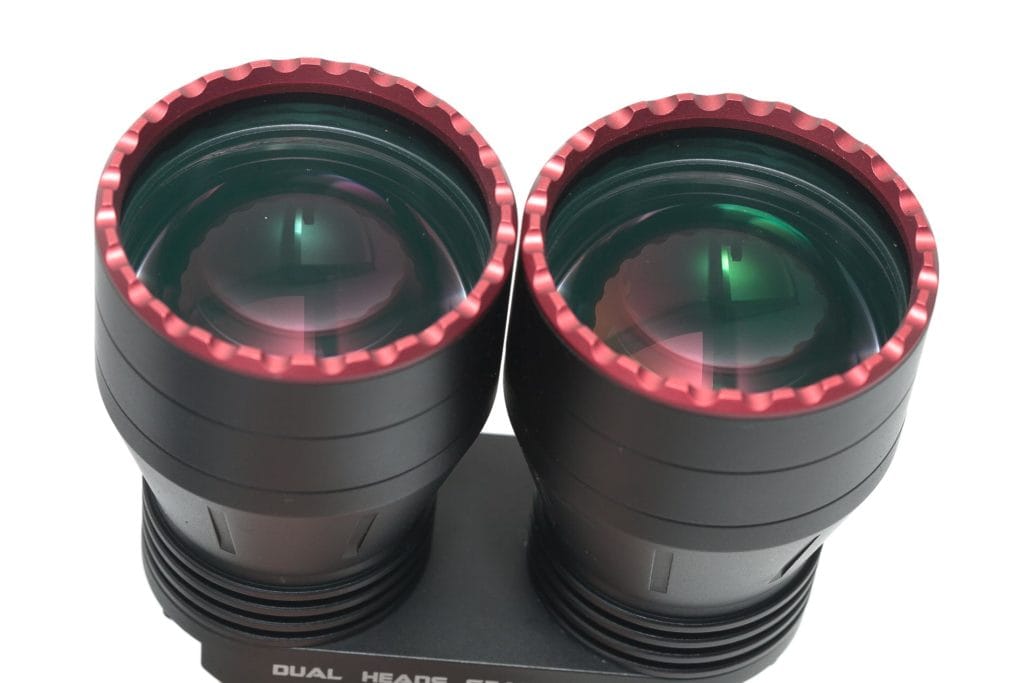
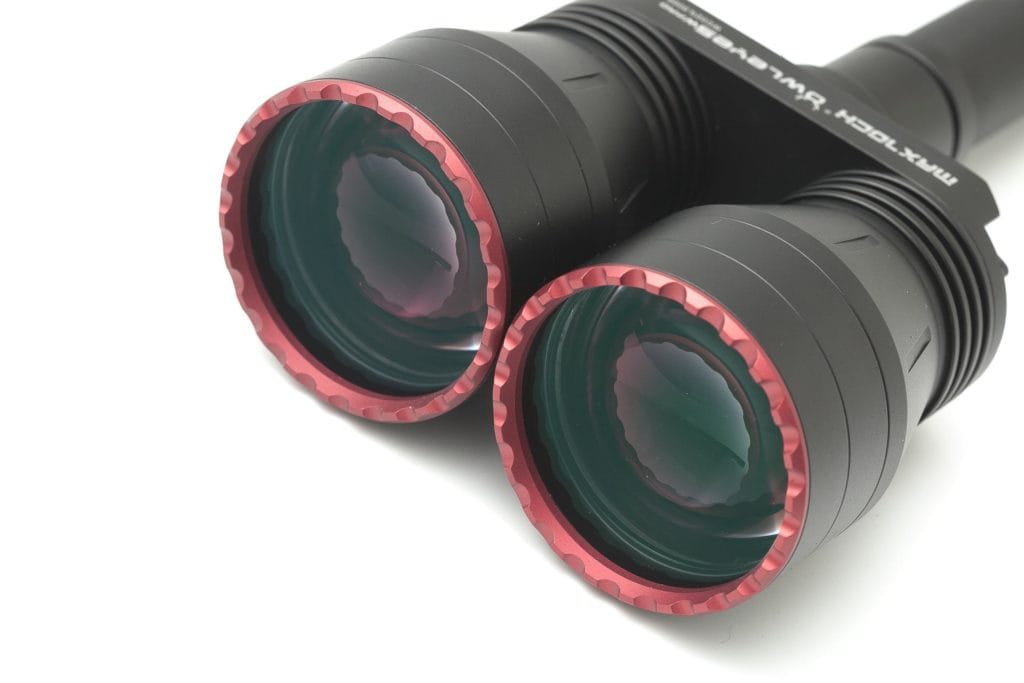
Dimensions and size comparison
- Length: 253 mm / 9.96 ”
- Head diameter: 59 mm / 2.326 ” each
- Body diameter: 25.4 mm / 1 ”
- Tailcap diameter: 30 mm / 1.18 ”
Weight:
- Empty: 502.6 g / 17.73 oz
- With battery: 649.5 g / 22.91 oz
LEP Flashlight comparison
Size compared to other LEP flashlights (siblings).
Image 1, from left to right: Maxtoch L3K, Maxtoch Owleyes W PRO, Maxtoch L2K, Maxtoch LA60 (zoomable).
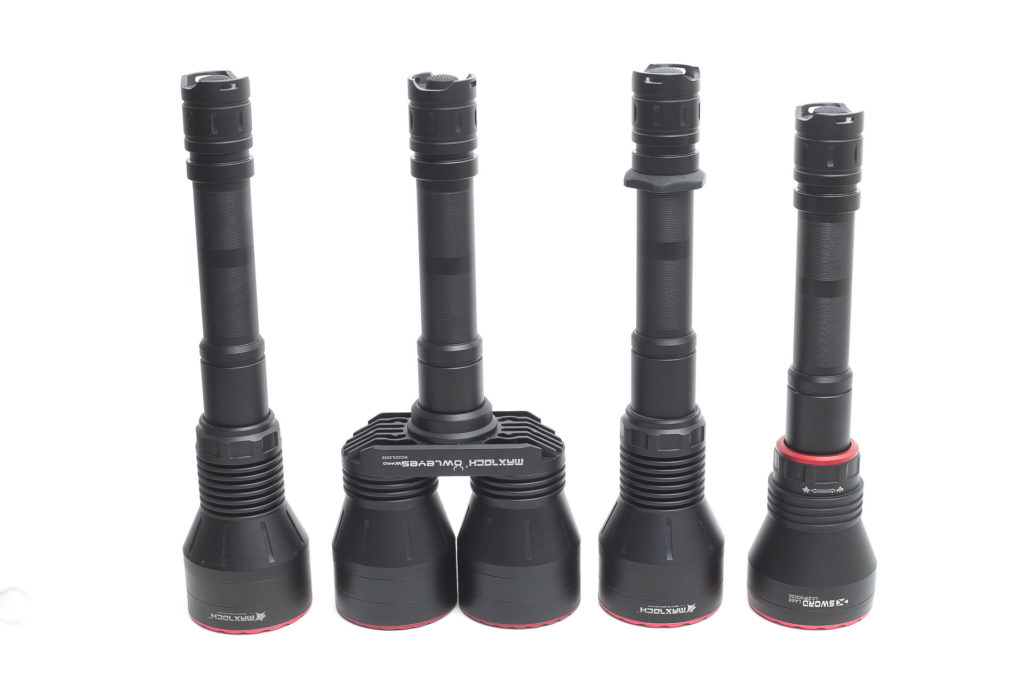
Driver & User Interface:
The W PRO has a simple UI, with only 3 modes. No hidden modes, and no blinkies. Just like a LEP should be.
Available modes:
- Low, Medium, High
From OFF:
- Half-press: momentary on
- Single-click: to last used mode, mode memory
From ON:
- Single-click: turns off
Shortcuts:
- None
Mode memory:
- Yes
Blinky modes menu:
- None
Low battery warning:
- No
Lock-out mode:
- No, and not necessary with a mechanical switch like this one
PWM:
- Not visible by eye
Firmware / UI Conclusion:
Maybe no-mode memory would have been better? If you have no memory, you know it always starts in a certain mode (preferably high). But something can be said for mode memory as well. So to each their own.
Batteries & Charging
I chose not to get the charger and batteries because I have enough of them. I don’t mind having an extra set of batteries, but chargers? I think I have enough.
The W PRO accepts 2*21700 batteries in series and since this is a Maxtoch flashlight, I tried using the batteries of the L2K and L3K for testing. Unfortunately, the ones that I got with the L2K were just a bit too long. The ones provided with my L3K fit perfectly. Both of them are 5000mAh batteries.
That means that you can’t use protected 21700 cells or long non-protected cells. Of course, you need button tops.
Performance
Lumen measurements:
All output numbers are relative to my homemade Integrating Sphere. It is set up with an Extech SDL400 Lux Meter for measurements including a Kenko PRO1D ND-16 filter. The base measurement is done with a Convoy S2+ that has been tested at 255 lumens.
For Amp readings, I use a Fluke 77III DMM. For higher amps, I now use a Fluke 325 True RMS clamp meter. For microamps, I use a cheap DMM with an easy-to-use micro amp setting.
Measurements were manually taken at turn on and after 30 seconds. The 10-minute measurements were taken from the runtime chart.
I used Maxtoch 21700 batteries with a 5,000mAh capacity.
| Mode | Specs | start | 30 sec | 10 min |
|---|---|---|---|---|
| Low | 200 | 260 | 257 | 241 |
| Medium | 600 | 624 | 601 | 559 |
| High | 1200 lm | 1033 | 966 lm | 875 |
Runtime:
The runtime test was done with the 50cm integrating sphere, including the Kenko Pro1D ND-16 filter and Extech SDL400 data logging Lux Meter.
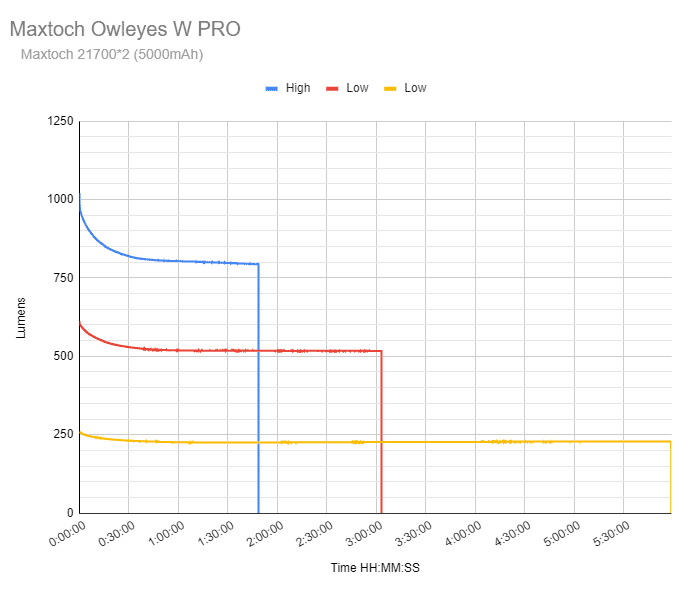
The graph looks a lot like the Maxtoch L2K, L3K, LA60, and L2Ks, with a pretty stable sustainable output.
High has a total runtime of 1h48min.
Medium a total runtime of 3h03min.
Low a runtime of 5h58min.
Throw Measurement
Measurements were taken outdoors at 30 meters with a professional Hagner E4-X Lux Meter. They were taken 30 seconds after turn on.
| Specs | Cd measured | Meters | Yards | Miles |
|---|---|---|---|---|
| – | 1170000 | 2163 | 2366 | 1.34 |
| – | 2619000 | 3237 | 3540 | 2.01 |
| 4 Mcd / 4,000m | 3996000 cd* | 3998 meters* | 4372 | 2.48 |
Note: A little more information on measurements. It’s important to note that 30meters is about the max for my laser distance measure that I trust (it can go up to 35meters).
So for the sake of some extra testing, I measured both LEP heads at 30 meters, 1 by 1, on the lowest setting (most stable). The first LEP measured 657,000cd, and the second 639,000 cd. But at the same distance, I measured the combined output of: 1,170,900 cd. That means that both beams didn’t fully center into 1 focused beam yet at 30 meters. Both hotspots were probably still a little off from each other.
I then tested at an unknown distance (since my laser distance measure gave an error), which was about 40+ meters, and the measurement for both LEPs was closer to the heads measured independently. Maxtoch also just added this to their website, saying, that the beams will combine into 1 beam at about 60 meters.
Update: I did another test, but now at 54 meters, and got a little lower reading at 3.76Mcd.. By the time I walked to the place I had to measure, the 30 seconds were already passed… lol
*So the 3,996,000 cd in High mode isn’t the maximum it can do. It is able to throw even farther, but I can’t verify it reliably because of my laser distance measure. I’ll have to get another one to be able to measure these kinds of lights, at probably 50+ meters. All I can say is that the Maxtoch Owleyes W PRO can throw at least 4,000 meters!
Here are 2 graphs that show how it performs in terms of throw.
Yup, pretty insane. The graph on the right includes Medium mode, and Low mode as well. Medium mode is about the same as High mode for the L2K, and L3K. While Low mode has 1,000,000 cd for almost 6 hours.
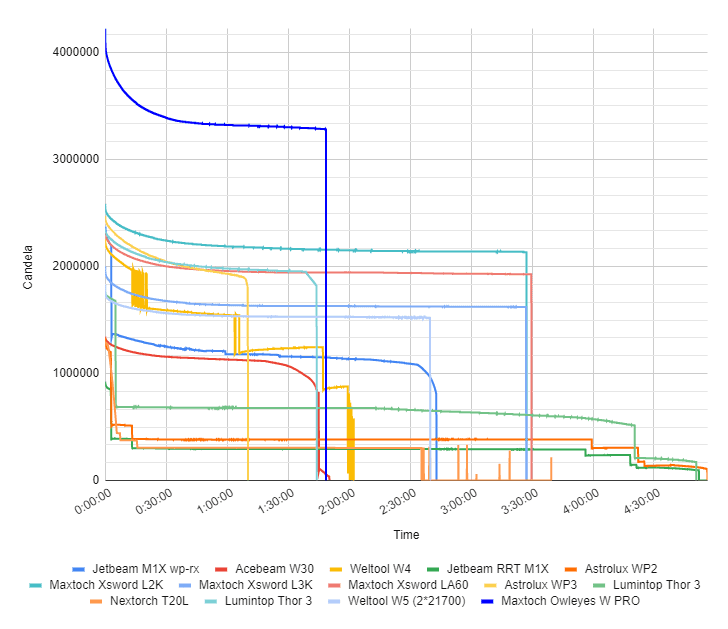
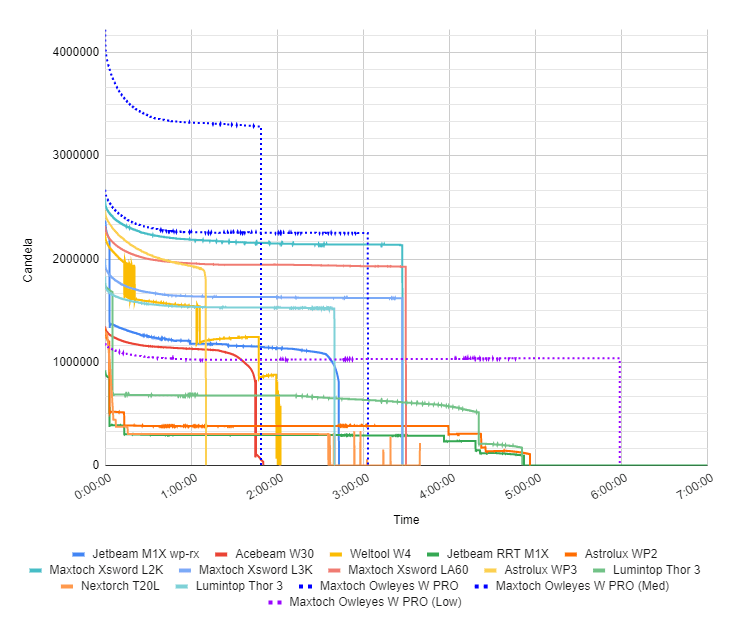
BEST LEP Flashlights comparison
A list of all the best LEP flashlights we reviewed, including multiple cell setups: These numbers are NOT from the specifications but measured by our reviewers. They include all types of LEP flashlights reaching 2,000,000 cd or more. The numbers include the measurement in lumens (lm), measured candela (cd), and calculated distance in meters and yards. These numbers are all measured 30 seconds after turning on.
Discontinued flashlights will be removed from this list.
| Flashlight | Battery | @30sec (lm) | Candela (cd) | Meters | Yards |
|---|---|---|---|---|---|
| Astrolux WP3 | 21700 | 445 | 2,412,000 | 3106 | 3397 |
| Maxtoch Owleyes W PRO v2 | 3*21700 | 1028 | 4,000,000 | 4000 | 4374 |
| Maxtoch LA60 | 2*21700 | 456 | 2,272,000 | 3015 | 3297 |
| Maxtoch L2K | 2*21700 | 445 | 2,508,000 | 3167 | 3464 |
| Maxtoch L2KD | 2*21700 | 548 | 3,051,000 | 3493 | 3820 |
| Maxtoch L2KS | 21700 | 442 | 2,308,000 | 3038 | 3323 |
| Weltool W4 | 21700 | 450 | 2,184,000 | 2956 | 3232 |
| Weltool W4 Pro | 21700 | 550 | 2,808,000 | 3351 | 3665 |
| Weltool W5 pro | 2*22430 | 981 | 2,284,000 | 3023 | 3306 |
Interactive graphs (hover your mouse over these graphs for more data)
Hover your mouse over the interactive graph below to see the details of each specific light. (tip: hold your mobile phone horizontally to see the whole graph). Or visit this link to open a new window for the interactive graph.
The same graph, but then zoomed in. Or check this link to open this interactive graph in a new window.
And here’s an overview with another comparison graph to show the distances and candelas measured at 30 seconds.
Beamshots
For the following beamshots, I used a Canon EOS 5D Mk2 and a 100mm lens. manual settings: ISO1600, .5sec , F4, 5000K
The tower is about 450 meters / 492 yards away.

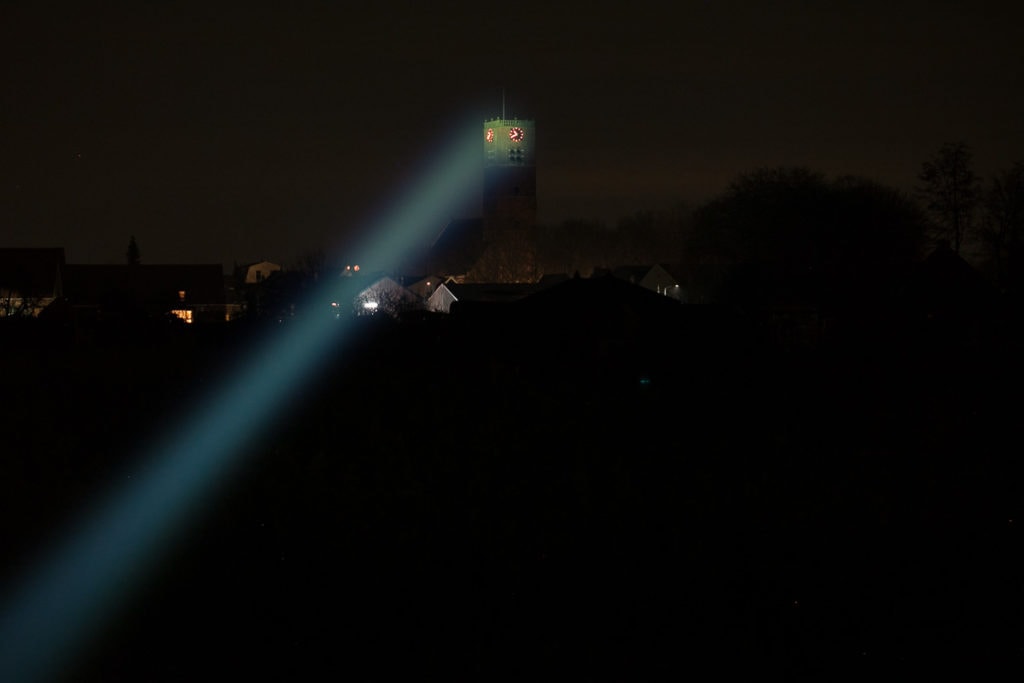
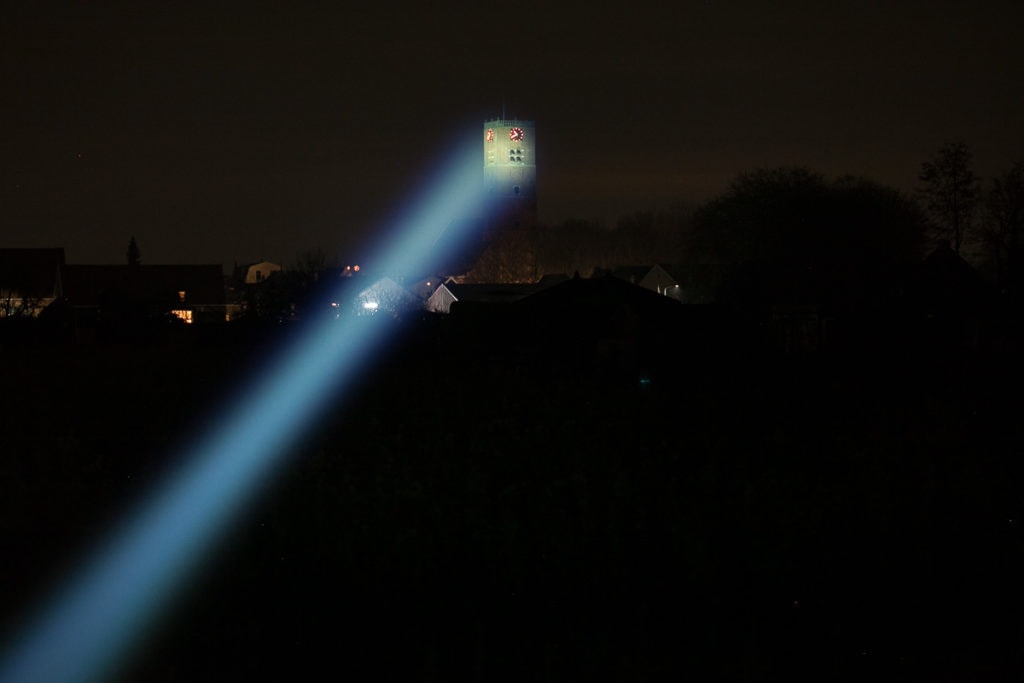
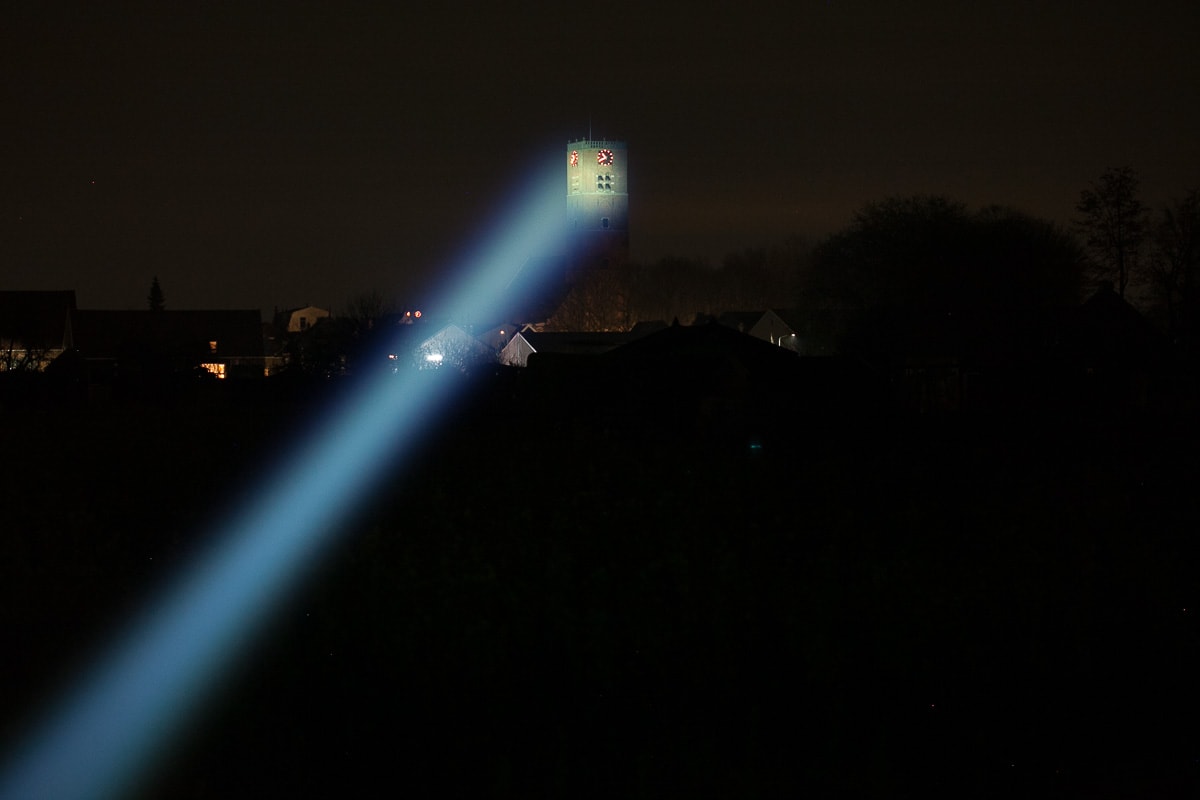
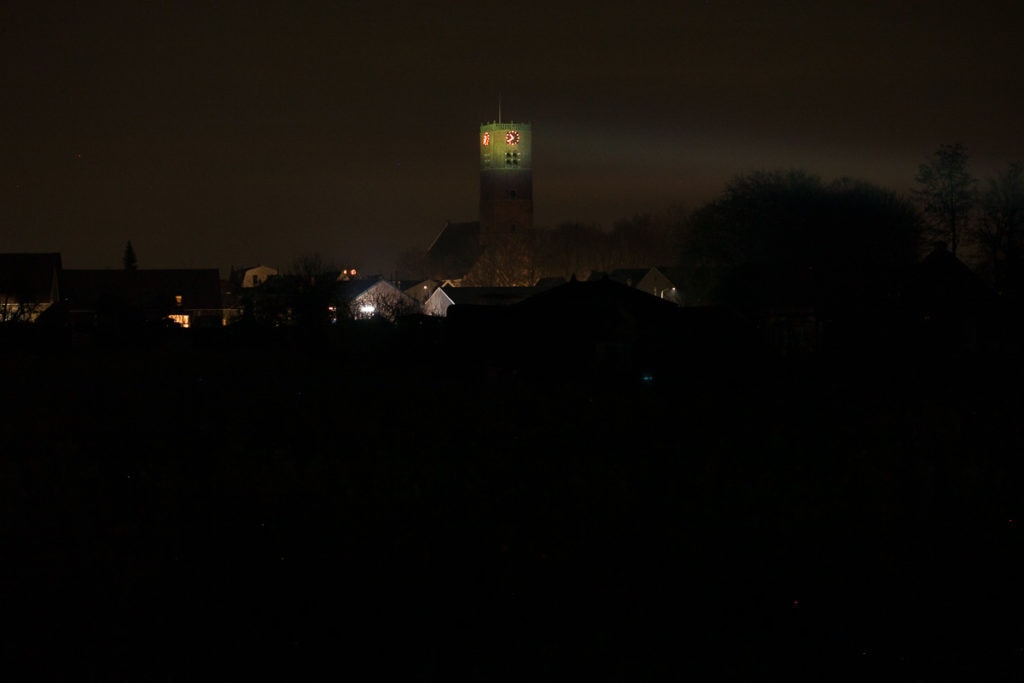
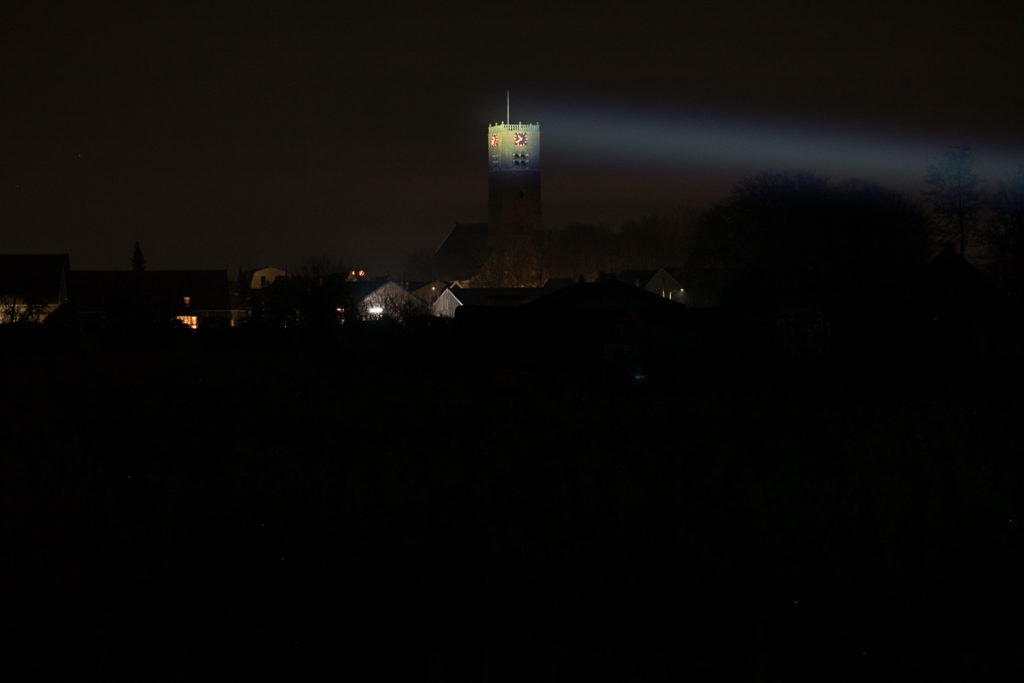
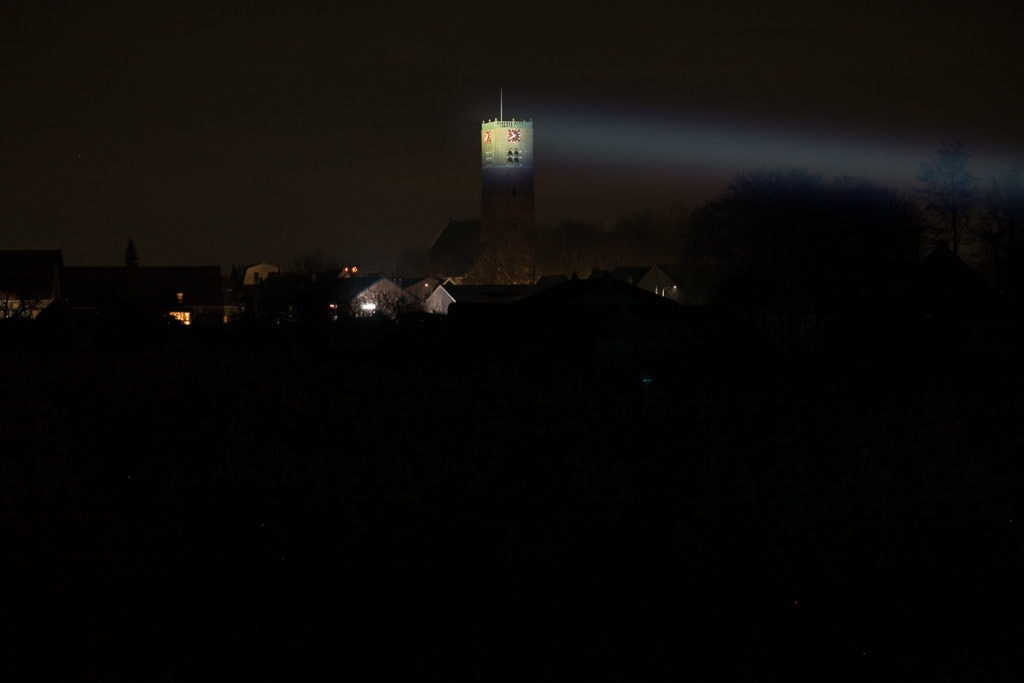
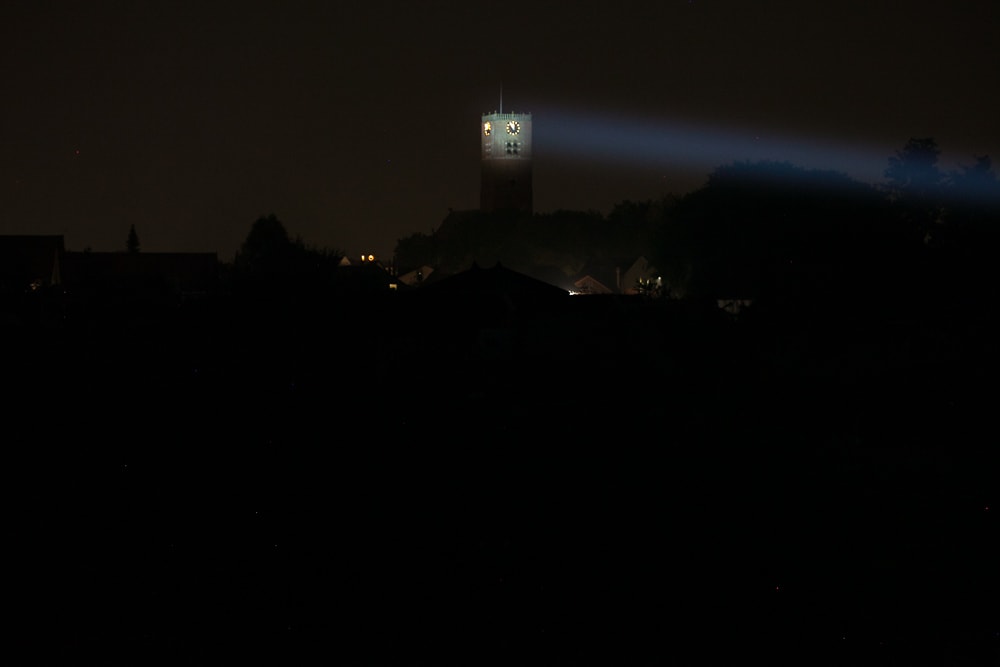
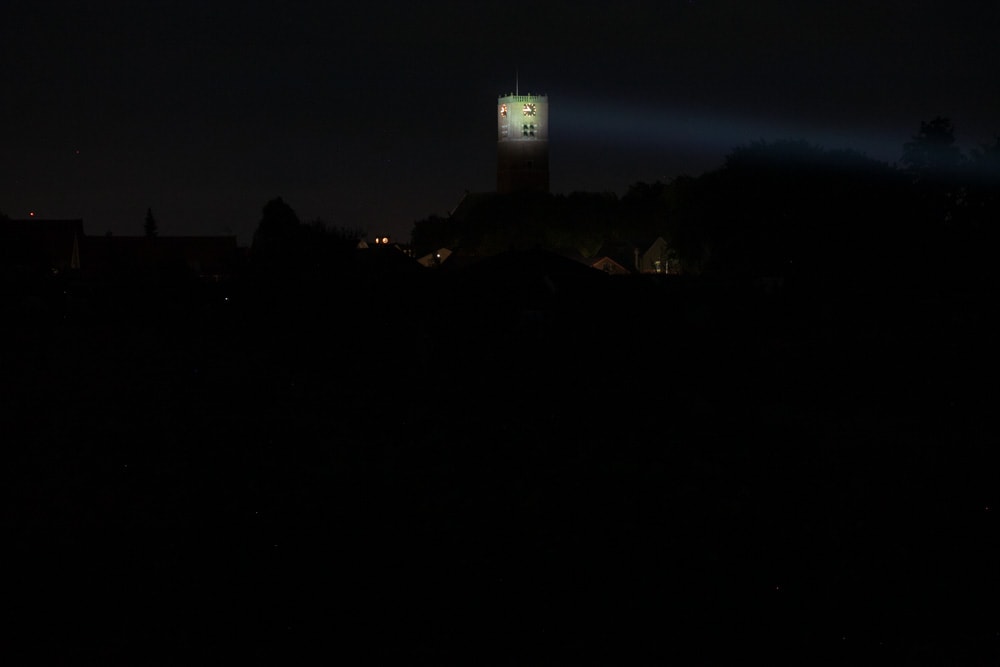
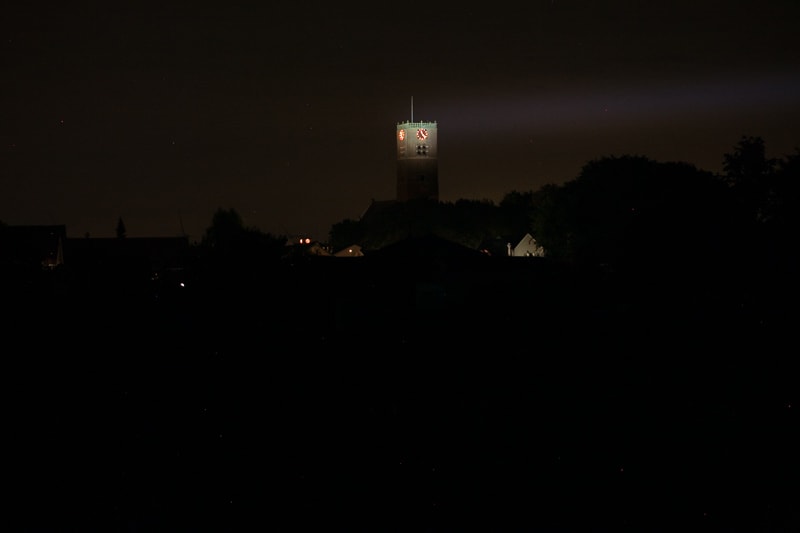
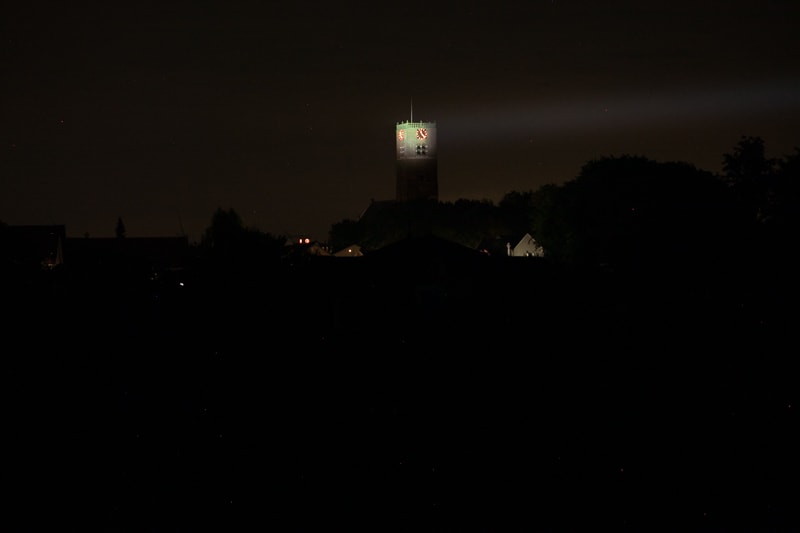
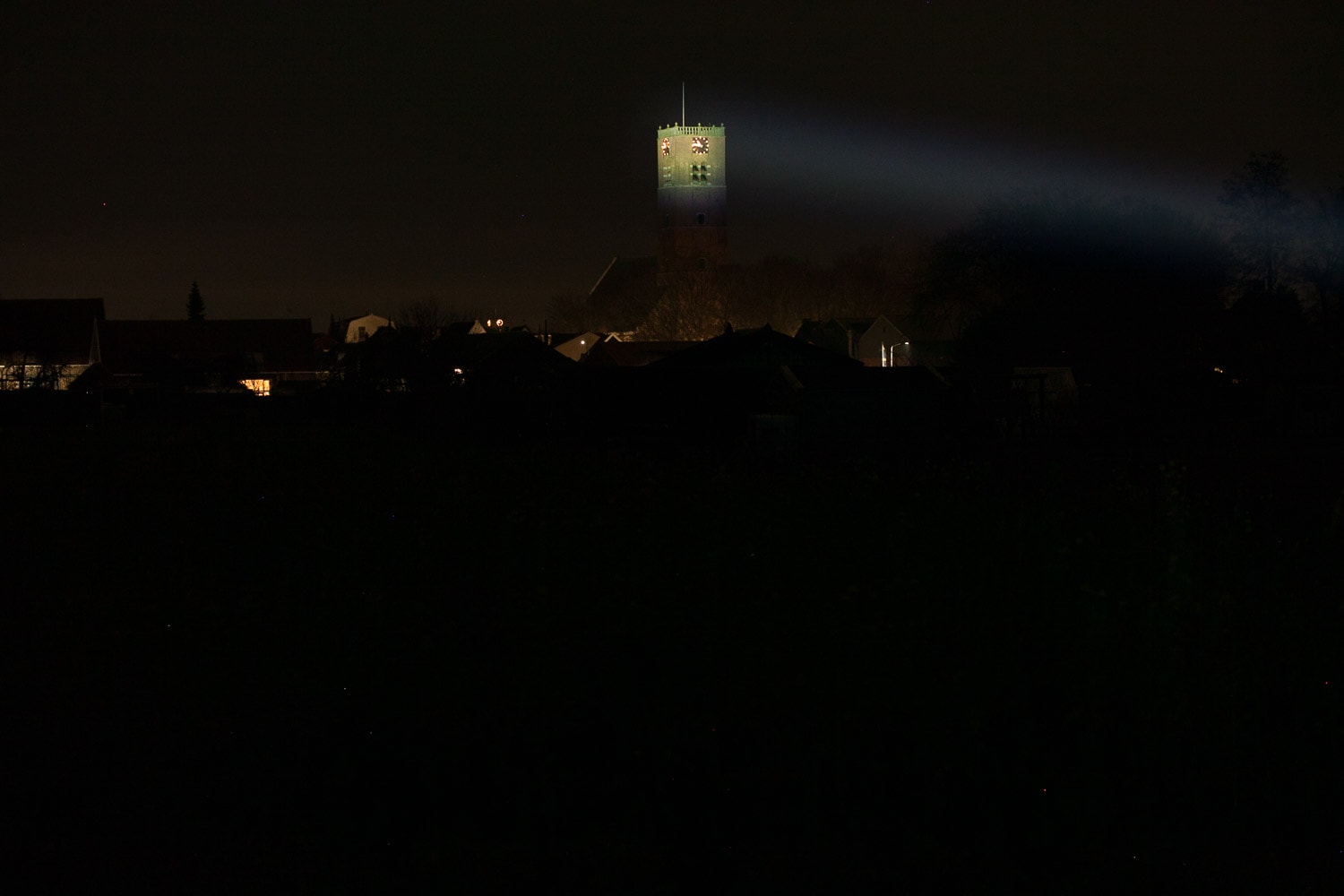
I also did a quick video to show the beamshots… Have a look:
Left = auto setting
Right = manual setting
Disclaimer: I bought this flashlight with a reviewer’s discount, with my own money. Nobody paid me to review this flashlight, nor have I been holding back on problems or defects.
Final Verdict
Pros
- Hahaha.. it throws…. very very very far. It easily reaches at least 4,000 meters
- Great sustained output/throw
- Simple UI with only 3 modes
Cons
- Little awkware design with the dual head setup
- Hard to measure the throw because of the 2 beams
Explanation on star ratings:
1: Avoid: my phone flashlight would be a better choice – 2: Poor: significant defect or issues; almost unusable – 3: Average: some defects or issues; but still usable 4: Good: recommended (minor issues) – 5: Great: highly recommended

5 stars: ★★★★★
Oh, if I could give it 5.5 stars, I would do it, lol. No, but if you see how far this thing throws, it’s just insane. I know, I said that about the Maxtoch L2K as well, and probably a few others. And it’s probably never satisfying enough to get another winner. I could give it a 4 or 4.5 stars as well, because of the less-than-ideal/beautiful dual head setup, but in terms of performance, this is the real deal.
If you just want to get the farthest-reaching LEP thrower available for consumers, this is it!
Buy your Maxtoch Owleyes W PRO
Edit: the Maxtoch Owleyes W Pro has been replaced by the Maxtoch Owleyes W PRO v2. Check out that specific review as well.
1lumen selects and reviews products personally. We may earn affiliate commissions through our links, which help support our testing.